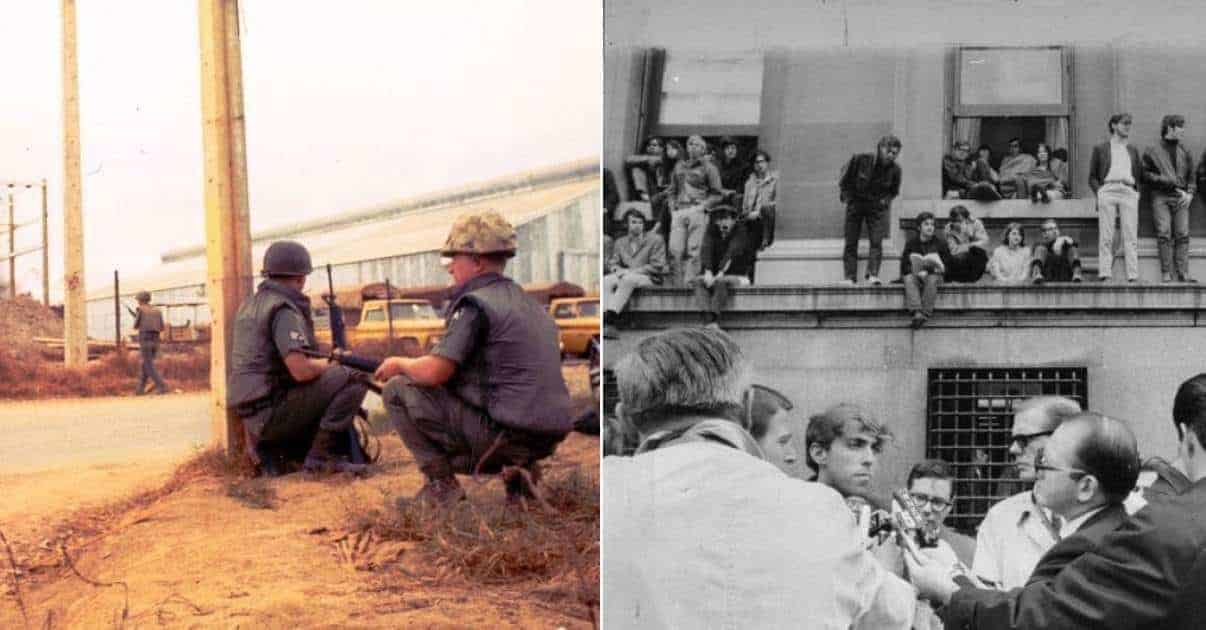In many ways, the United States is a misnomer and has been throughout the history of the nation. America has always been a nation in which differing public opinion has threatened the allegiance of the people to each other and to the contract expressed in the Constitution to provide for the common welfare. There are those who daily proclaim that the nation has never been more polarized than it is today. They ignore America’s history, including that of the Civil War, the socialization of society during the New Deal, and most of all the divisiveness of a single year of American history, 1968.
It was a year of suspicion the government had repeatedly lied to the American people over the conduct and course of a war which many didn’t believe America should be fighting. A nation which still hadn’t fully recovered over the assassination of its President less than half a decade earlier witnessed other leaders fall to the bullets of murderers. The process of open and free elections was threatened. A tiny and perceived to be backward nation nearly brought the United States military to its knees. American citizens in American towns were killed by American bullets fired by American police and paramilitary forces. Cities were torn apart by violent riots, incited by racial hatred and political invective.

The year 1968 brought a series of events which roiled the United States, deepened the Cold War with the Soviets and the shooting war with the North Vietnamese, and shook Americans’ faith in their most cherished institutions. Here are ten pivotal events from the year 1968.

North Korea seizes USS Pueblo, January 23, 1968
On January 23 1968 USS Pueblo, an intelligence gathering ship of the US Navy operating in international waters, was deliberately attacked, boarded and subsequently taken as a prize by units of the North Korean Navy, supported by MIG 21 fighters. Pueblo was outside the internationally recognized limit of 12 miles from the Korean coastline, but the North Koreans claimed a fifty-mile limit, thereby justifying their seizure of the American ship. No US Naval vessel had surrendered to an enemy at sea since the War of 1812. One American sailor was killed in the attack.
The ship was taken into port and the crew was imprisoned. During the attack, the Americans had had little time to destroy the raft of classified data and encryption equipment aboard the vessel, largely because there was so much of it aboard. The US Navy lacked the naval assets in the area necessary to launch a rescue mission during the attack. Before the week was out the presence of Pueblo in Wonsan harbor, surrounded by North Korean naval vessels, was confirmed. American reaction was immediate. Congressman L. Mendel Rivers, a South Carolina Democrat, insisted that President Johnson issue an ultimatum demanding the return of the vessel and the crew under pain of the nuclear attack. Other leaders were more circumspect.
The crew and their commanding officer, Lt. Cdr. Lloyd Bucher, were imprisoned by the North Koreans in Prisoner of War Camps left over from the Korean War. They were routinely tortured, physically and mentally. Commander Bucher was told that he was to be executed as a spy and stood up before a mock firing squad. Crew members were repeatedly beaten by their guards. When the North Koreans staged photographs of crew members to demonstrate that they were being well treated, many of the sailors posed while giving the middle finger to their captors. The North Koreans were told that the gesture was a Hawaiian good luck symbol, when they learned the truth (from an American publication) the beatings became more savage.
Negotiations between the North Koreans and the United States for the release of the crew dragged on throughout the year. Commander Bucher, faced with the threat of watching his crew being executed before his eyes, signed a confession that his ship had been in Korean waters operating as a spy ship, apologizing for his actions, although he managed to leave enough clues in the confession to allow American analysts to determine that it had been coerced. The negotiations were further complicated by the South Koreans, who were concerned that American actions could lead to a renewed conflict on the peninsula. The crew was finally released in December, after spending nearly all of 1968 in custody. The North Koreans refused to release the ship, it remains today a museum vessel in Pyongyang, still a commissioned warship of the United States Navy.
The Pueblo affair divided the American public, some of which demanded an immediate punitive military action, while others, concerned over the quagmire of American involvement in Vietnam, counseled a more restrained response. American military prestige suffered a severe blow, and the amount of classified information lost to the North Koreans and their Soviet sponsors was devastating. Although the Pueblo affair dominated the national news in early January, it was quickly relegated to the back pages by the conflict in Vietnam, which by the end of January dealt America another shocking blow.

